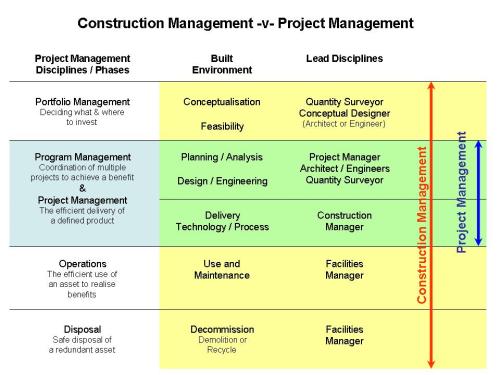The importance of understanding culture in designing successful communications to influence and inform stakeholders cannot be understated. But as discussed in previous posts, culture is multi-dimensional. Some of the facets include:
- corporate culture – how the organisation works
- industry/professional culture – the way people in a profession work and relate
- age – baby boomers, Gen X, Y and Z (at least in the western world)
- national/ethnic cultures
The last of these facets tends to be over simplified in many texts. There is not just an east/west divide! Robert J House in Culture, Leadership and Organizations (2004 – Sage Publishing) reported on the Global Leadership and Organizational Behaviour Effectiveness (GLOBE) program that is undertaking a long term study of 62 societies.
The GLOBE study identifies ten national culture clusters that have distinctive leadership and management behaviours:
- Asian:
a. South Asia – Philippines to Iran, including ASEAN countries and India
b. Confucian Asia – China, Japan and Korea plus Singapore, Hong Kong and Tiwan - European:
a. Anglo – North America, UK, Australia /NZ and ‘white’ South Africa.
b. Germanic – Germany, Austria and Netherlands
c. Latin – Portugal, Spain, France, Italy, Israel.
d. Eastern – Poland and Greece to Russia.
e. Nordic – Denmark to Finland, Iceland. - Arab – Qatar and Iraq to Morocco
- Sub-Sahara Africa including ‘black’ South Africa.
- Latin America – Mexico to Argentina.
The GLOBE study focused on the interrelationship between societal culture, organisational culture and organisational leadership. Attributes such as uncertainty avoidance, power distance and performance -v- human orientation were considered.
Yoshitaka Yamazaki in Learning Styles and Typologies of Cultural Differences (2005 – Science Direct) identifies six dimensions:
Cultural typologies in anthropology
1. High-context vs. low-context cultures
2. Shame vs. guilt cultures
Cross-cultural management literature
3. Strong vs. weak uncertainty avoidance
4. M-type organizations vs. O-type organizations
Cross-cultural psychology
5. Interdependent-self vs. independent-self
6. Field-dependent and field-independent
High context societies place great importance on ambience, decorum, the relative status of the participants in a communication and the manner of the message’s delivery. Effective communication depend on developing a relationship first, because most of the information is either in the physical context or in the context of the relationship, therefore relatively little needs to be in the coded, explicit, transmitted part of the message. Communication in low context societies tends to have the majority of the information vested in the explicit code transferred by the message. People from high context societies (eg, France or China) may think people from a low context society (eg, Germany or USA) think they are stupid because the low context people include all of the information in a message. Similarly, people from high context societies are unlikely to express their disagreement or reservations in an open meeting, circumstances and relationships are as important as work so they would comment in a more private or appropriate occasion but only if the opportunity is provided.
Shame or guilt considers whether a person has an outwards orientation based on the judgement of others or an inward orientation focused on their core ethical values to encourage high performance and moderate poor performance.
O-Type organisations are where the employees see themselves as a permanent part of the group; they are part of a social collective. M-Type organisations are more focused on individual achievement.
Field-dependent societies adhere to structures and perceive or experience communication in a global fashion. Field-independent societies and people are analytical; they can self-structure situations and have self-defined goals and reinforcements.
These differences in approach were one of the reasons I posed the question ‘do we need cultural extensions to the PMBOK?’ (see: PMI’s Voices on Project Management). But while understanding cultural stereotypes may be a helpful starting point, no grouping or stereotyping will provide the necessary subtleties needed for important communication.
Firstly, everyone’s experience is unique and the person you wish to communicate with will have been moulded by a range of influences including the corporate and professional cultures they have worked within. Second, no study I am aware of has focused on the effect of the global communication network on national cultural behaviours. The concept of baby boomers, X, Y and Z Gen, is very much a western phenomena, there are certainly likely to be age groupings in other cultures but where the divides lie and how technology interacts with the national characteristics is largely unknown (at least to me). Thirdly, people travel widely for both education and work, even after returning home they will have absorbed some of the influences of the other cultures they have lived in.
So how should you approach the planning of an important communication? As a start, try to define the normal communication mode of the person you are seeking to influence or inform. Understanding national characteristics helps, but is not enough; you need to seek information from a wide range of sources. Err on the side of caution if there is any doubt about the optimum mode for communication. Then carefully observe the effect of your initial communication on the receiver and adjust the mode until you achieve a satisfactory result.
My paper for the PMI Asia Pacific Congress, Beyond Reporting – The Communication Strategy, is also focused on the topic of effective communication, as is my next book, Advising upwards: A Framework for Understanding and Engaging Senior Management Stakeholders due for publication in 2011. So expect more on this subject in the New Year.


